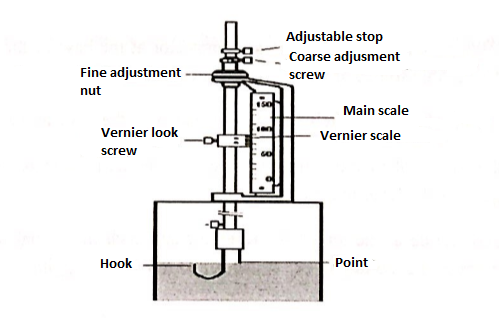Lab 4: Fluid Statics and Manometry Apparatus
Lab 4: Fluid Statics and Manometry Apparatus
Location: UDC, engineering building, C level
Objective:
We are performing this lab to:
- Determine a liquid’s level by the use of general and most commonly used measuring techniques such as Vernier depth gauge, inclined scale and scale.
Introduction:
We implement fluid statics and manometry to find out the behavior of liquids under certain circumstances of hydrostatics. This lab will show the measurement of the level of liquid using different techniques such as:
- Linear scale
- Avoiding parallax
- Vernier scale
- Inclined tube
- Area ratio
Apparatus:
The following equipment is used for the experiment:
- Fluid statics and manometry apparatus (F1-29)
- Hydraulics bench (F1-10)
- Food color (water soluble)
Procedure:
- First of all put the F1-29 apparatus on a firm surface.
- Connect one end of the reservoir’s filling tube to the F1-10, fill reservoir to 200 mm and put a few drops of food color to make the level more visible.
- Now measure the depth using linear scale by keeping your eye at the level of the water and observing the difference between true surface and meniscus. Record the reading.
- Now we will use avoiding parallax method. First keep the eye 100 mm above and then 100 mm down of the water surface.
- Keep moving the head up and down. It will be observed that the reading vary when the eye is not at the exact level. Record the reading when he eye is at exact level of the water surface.
- We will use the Vernier scale method now to measure the water level. For this purpose the apparatus shown below is used:

- First open the coarse adjustment screw and move the vertical rod up and down. When the desired level is obtained, tighten the screw again.
- When the tip of the vertical rod and its shadow coincides with each other, record the measurement.
- Now let the Vernier look screw open and sets its zero point in line with the convenient point. Record the reading.
- Open up the base valve of reservoir to let the water release slowly.
- Adjust the height of the Vernier gauge and record the change of water level.
- Now move the fine adjustment nut until the tip of hook is at water surface. Record the reading
- The final method we will use will be incline tube method.
- Hold the right angle tube while pulling the indexing knob forwards than inclining the knob at an angle of 60 above the horizontal. Then put the knob back into the secure point.
- Open the lever operated valve and let the water to enter the tube. Observe the distance travelled by water is more than the vertical height, so the movement of water is magnified.
- Hold the right hand tube while pulling the indexing knob forwards then incline the tube to an angle of 30 above the horizontal and push the knob back to secure position.
- Repeat the same procedure as that of 60.
Readings and Calculations:
Note: Liquid is water
| Liquid level measurement using a level scale liquid level (mm) | Liquid level (mm) | |
| Eye at the liquid level | 200 | |
| Eye 100 mm below the liquid level | 197 | |
| Eye 100 mm above the liquid level | 203 | |
| Liquid level measurement using Vernier scale liquid level (mm) | Liquid level linear (mm) | |
| Point gauge 50mm-39.2mm = 10.8 mm | 200-189=11 | |
| Hook gauge 50mm-44.6mm = 5.4 mm | 189-184=5 | |
| Free surface Demonstration | Liquid level (mm) | Vertical height (mm) |
| At reservoir/ U-tube | 178/176 | 178/176 |
| Fixed tube | 176 | 176 |
| Incline tube 60˚ | 212 | 212*sin(60) = 183.6 |
| Incline tube 30˚ | 420 | 210 |
| Pressure change in the reservoir | Level change in the reservoir/Pressure change ΔP (kN/m2) | Level change in the U-tube/Pressure change ΔP (kN/m2) |
| Apply the pressure | 168 | 325 |
| Reduce the pressure | 185 | 48 |
| Pressure change in the U-tube | Level change in the U-tube/Pressure change ΔP (kN/m2) | Level change in the reservoir/Pressure change ΔP (kN/m2) |
| Connection with the reservoir | 0 | 182 |
| No connection with the reservoir | Left 331 / Right 11 | 177 |
| Pressure changes in the two fixed tubes | Level change in the legs (mm) | Level change in the U-tubes (mm) |
| Apply the pressure | Left 176 / Right 14 | 176 |
| Reduce the pressure | 170/405 | 171 |
Results and conclusion:
The most accurate method is inclined tube method since it gives the closest reading. The linear scale method can be subjected to great error which is human error. The avoiding parallax method is subjected to the same disadvantage but both of them are economic and easy to implement.
On the other hand, the Vernier scale method and incline tube are much accurate but expensive and tough to implement.




